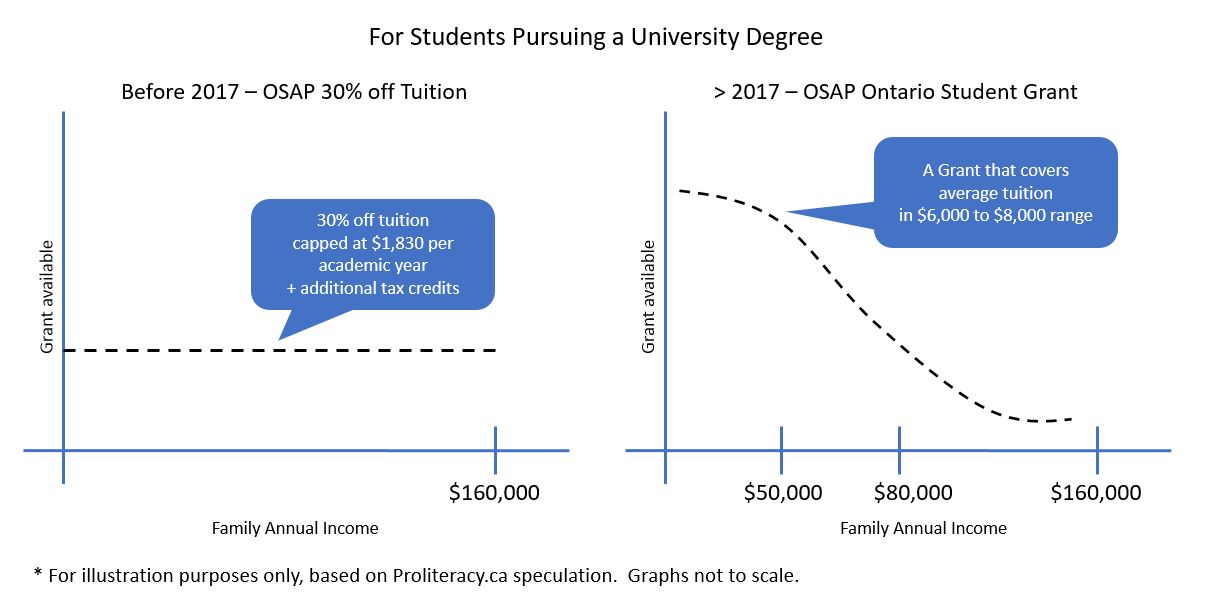Guest Post by Proliteracy.ca: How Does Free Tuition in Ontario Work?
This post originally appeared on Proliteracy.ca, January 25, 2017 (updated March 2, 2017). We thank Proliteracy for allowing us to share the post on the Canada Learning Bond Community site.
In 2017, the Ontario government is launching the new Ontario Student Grant (OSG), a grant that aims to providing families in lower income brackets enough funding to pay for post-secondary education. OSG replaces a few existing programs and tax credits, the main one being the 30% off tuition program that was part of the Ontario Student Assistance Program (OSAP). Other grants being consolidated under OSAP include the Ontario Access Grant, the Ontario Child Care Bursary, the Ontario Student Opportunity Grant and the Ontario Distance Grants.
The fact that there is no indication of additional government funding implies a re-packaging of the annual funding available. While no precise details have been released at the time of this post, we can safely assume that the grant is distributed based on the families’ income levels. In other words, the more money your family makes, the smaller size grant you can expect to receive.
Many grant eligibility criteria stay the same as before:
- You must be an Ontario resident.
- The amount granted depends on whether you are pursuing a university degree, college degree, college diploma, college certificate programs or vocational programs at private career colleges in Ontario
- The school you attend must be approved by OSAP.
Again, the primary difference between the Ontario Student Grant and the 30% off tuition program is the way in which funds are allocated across families. Under the Ontario Student Grant, funds are now allocated based on families’ income levels, whereas before, funds were distributed the same way across all families earning up to $160,000.
Have a look at the following before and after illustrations for students pursuing a university degree:  To arrive at the above illustrations, we are assuming that the total pool of funding families would receive under the new Ontario Student Grant is equal to that under the 30% off tuition program plus additional provincial and federal grants and tax credits.
To arrive at the above illustrations, we are assuming that the total pool of funding families would receive under the new Ontario Student Grant is equal to that under the 30% off tuition program plus additional provincial and federal grants and tax credits.
Our speculation is that the Ontario Student Grant will be most favourable to families earning less than $50,000 each year. Families in higher income brackets, especially those that would otherwise not take advantage of the lesser known OSAP grants, may still be better off than before.
That’s it for now. Sign up with Proliteracy.ca to stay informed about new developments surrounding “free tuition” in Ontario.
By Alfred Yang at Proliteracy.ca. This post was originally shared on Proliteracy.ca (updated March 2, 2017).